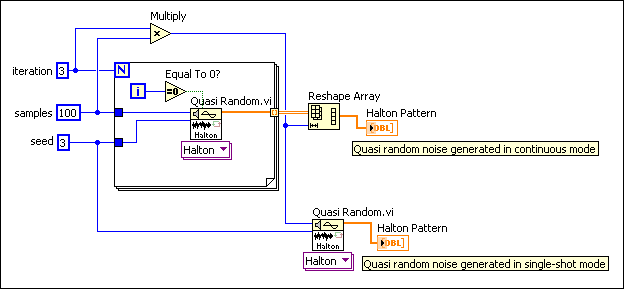Quasi Random VI
Owning Palette: Signal Generation VIs
Requires: Full Development System
Generates quasi-random Halton or Richtmeyer sequences, which are low-discrepancy number sequences.
You must manually select the polymorphic instance to use.
Use the pull-down menu to select an instance of this VI.
 Add to the block diagram Add to the block diagram |
 Find on the palette Find on the palette |







